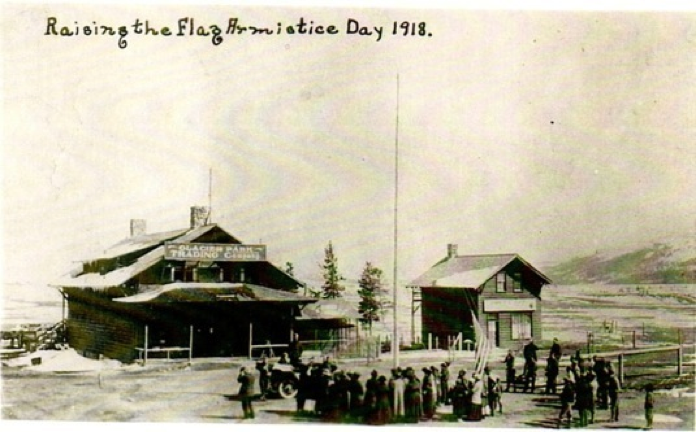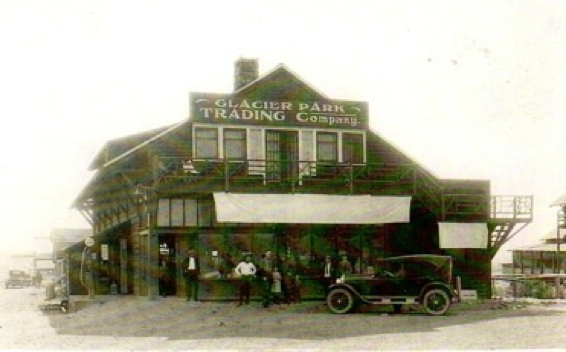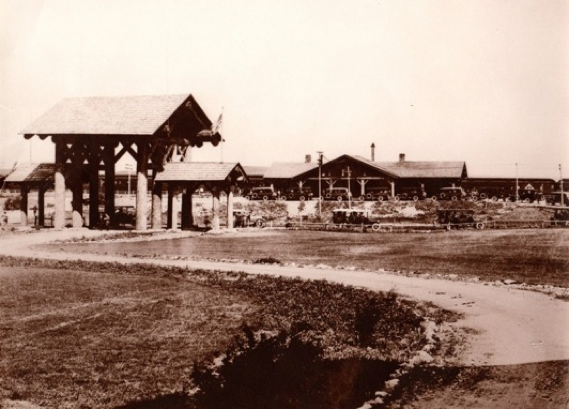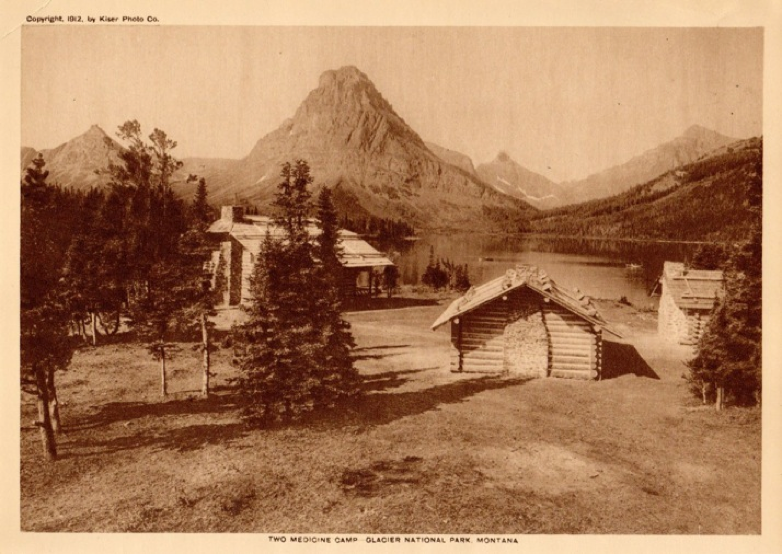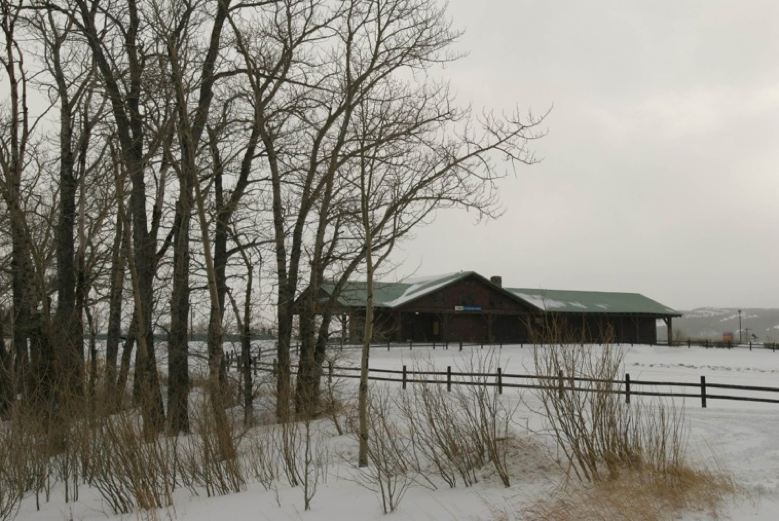
East Glacier Park Railroad Station, December 2007, Bob Folsom
In East Glacier the Blackfeet Indian Tribe has had a major cultural influence; the Great Northern Railroad (and now Burlington Northern Santa Fe) has had its economic influence; French and English explorers and fur traders came and stayed; copper and gold miners came and went; the formation of Glacier National Park along with the national highway system made the place accessible to all; and western and foreign migration has colored this peculiar village, originally called Midvale.
Click here for a nice summary.
More on the transcontinental highway system, the erection of the Park lodges, the on-going connection with the local Blackfeet people, and the building of Going-To-The-Sun Road can be read in this newspaper article.
More history about the Blackfeet influence, the Lewis and Clark expedition, geographical influences (The Backbone of the World) and significance of European explorers can be found here.
Finally, a click to the past will explain what a trip to Glacier Park might have been like in 1939!
JOHN L. CLARKE WESTERN ART GALLERY & MEMORIAL MUSEUM.
John Louis Clarke was born in Highwood, Montana in 1881, and at the age of two was stricken with scarlet fever which left him permanently deaf and mute. In his early teens, John’s family moved to East Glacier Park, then called simply “Midvale” after the nearby creek. Along that river, the Clarkes built one of the town’s original homes, and John spent most of his long life here, creating art in his quiet world.
In 1970, when he died at age 89, Clarke could look back at honors of exhibiting his wood carvings in many prestigious galleries both across the nation and across the pond. Among the many collectors and notables who owned Clarke carvings were President Warren G. Harding, John D. Rockefeller, Jr., and Louis Hill (owner of Great Northern Railway). He issued a prodigious number of carvings and paintings during his lifetime and is “generally considered the best portrayer of western wildlife in the world.”
His accomplishments started early - in 1918, he was awarded a gold medal by American Art Galleries of Philadelphia, and a silver medal in 1928 from the Spokane Art Association. A bronze plaque was given him by the Montana Association of the Deaf in 1964 in recognition of his talents, and in 2003, he was inducted into the Gallery of Outstanding Montanans in Helena – the equivalent of the Montana Hall of Fame.
In 1918, he married Mary “Mamie” Simon, and they later adopted a daughter, Joyce. In 1977, she opened the original gallery in the footprint of her father’s art studio, which she lovingly operated until 2013. It is now owned by her daughter, Dana, and continues to operate during East Glacier’s amazing summer season.
-- submitted by Dana Turvey, 2015
Photos submitted from the Clarke-Turvey Family archives.
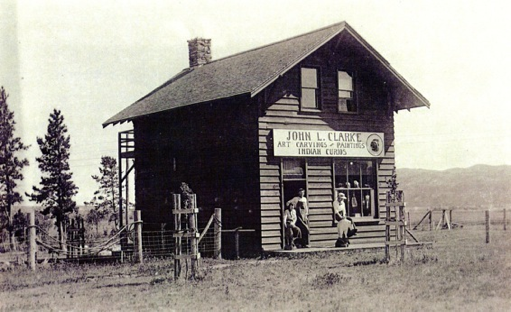
©1912 by Kiser Photo Co.,from Clarke-Turvey family archives
Historical information and local stories of East Glacier are welcome!
Please submit any history, tales, and folklore to the Webmistress.
